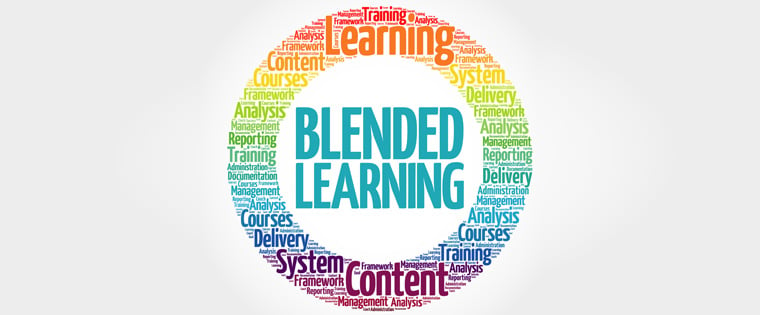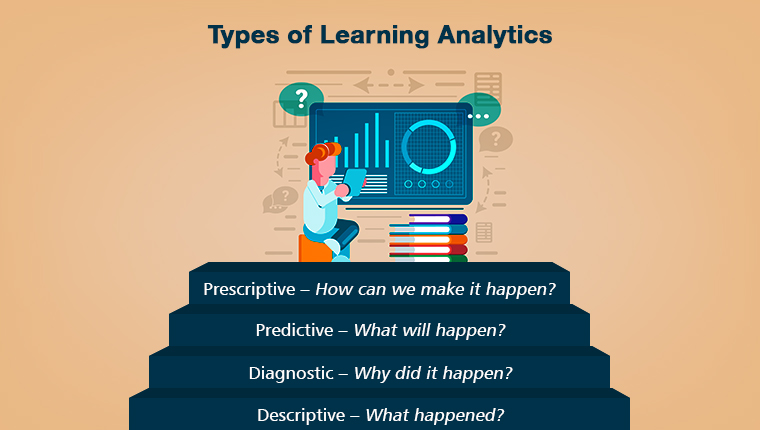How to Measure the Effectiveness of E-learning Programs
Measuring the effectiveness of e-learning plays a major role in deciding whether training courses are working for a particular set of employees or not. Let us look at some popular ways to measure e-learning effectiveness.
E-learning has taken the world of learning by storm, flaunting its features such as flexibility, cost-effectiveness, accessibility, and more. Organizations adapting to e-learning is just one step of the process. Measuring the effectiveness of e-learning courses plays a major role in deciding whether certain training courses are working for a particular set of employees or not. There might be e-learning courses with excellent features, but they might not be suitable for a set of audience. Measuring the effectiveness of e-learning will help training managers realize whether their e-learning courses are being effective enough.
What is effective e-learning?
When e-learning helps organizations achieve the desired business results such as increasing the ramp rate of product revenue, reducing turnover and rework, increasing customer satisfaction and more, it can be termed effective. So how exactly can one measure the effectiveness of e-learning courses? It can be done by assessing the impact of a certain training course on the learners. No matter how expensive or good a course is, it wouldn’t be deemed effective unless it helps the learners and trainers achieve their goals. Let us look at some of the popular ways to measure e-learning effectiveness.
Learning outcomes
Learning outcomes should be aligned with the learning objectives. For instance, taking a certain e-learning course should result in learners achieving the desired learning outcomes. Unless the e-learning program fulfills the purpose, it won’t be considered effective.
Knowledge transfer (application to practice)
E-learning programs aimed at training the workforce would not be considered effective unless they help the employees in transferring their knowledge to their workplace. E-learning programs should not just impart knowledge but help employees improve their decision making skills, react accordingly when a similar real life situation materializes, and more.
Perceived learning, skills or competency
E-learning effectiveness is also measured based on the learning perceived by learners, their acquired skills and their competency. These three elements can be measured by comparing them with the previous learning, skills and competency. If there is an increase in these three elements, the e-learning program is said to be effective.
Attitude
Effective e-learning makes employees want to take more courses or want to train themselves better in various business aspects. If an e-learning program is ineffective, learners will feel obliged to take the course rather than wanting to take it.
Satisfaction
The effectiveness of e-learning can also be measured based on the satisfaction of the learners. A learner-centric e-learning program would make learners feel satisfied by the gained knowledge. It will also help them assess their knowledge and improve in the areas required.
Skills acquired
The skills acquired have a direct correlation to the effectiveness of an e-learning program. If the learners do not acquire the required skills even after taking the e-learning program, then it would be termed ineffective.
Learning retention
E-learning programs should not aim at just providing the necessary skills and knowledge, but also aim at providing the content so that it is retained for longer periods of time. There would be no use in providing excellent content that cannot be retained by the learners.
Completion
The effectiveness of an e-learning program also can be measured by looking at how many learners have started a course and completed it. If the number of learners not completing the course is high, then the e-learning course might be termed ineffective.
Motivation and engagement
Effective e-learning motivates and engages the learners. Instructional design strategies for creating a good learner experience aim to make courses more engaging, motivating, and learner-centric, in turn make the e-learning effective.
Organizational results
E-learning programs are considered effective if they achieve the desired organizational goals or business results. For example, if an e-learning program is targeted at improving the sales skills of the sales force, then it is said to be effective if it helps achieve that and in turn, increase the profit margin of the organization.
Cost-effectiveness
E-learning effectiveness can also be measured by the cost taken to develop the courses and the results it produces. ROI can also be a metric when it comes to measuring e-learning effectiveness.
In short, the effectiveness of e-learning programs can be measured using the four Rs proposed by Donald Kirkpatrick – Response, Results, Revisions, and Review. Let’s look at each R in a little detail.
Response
The response for courses can be measured by checking if employees are signing up for them or not. If you don’t find learners signing up for the course or do not find the desired response, it could be that:
- The course is not marketed well enough
- Learners:
- Can’t find the course
- Don’t know how to enroll
- Don’t recognize its need
Signing up for the course is one part of the process. The next step would be to assess how many of the signed up employees complete it. If the number or response is below par, there might be a high chance that the course is not very effective. Also, if a learner completes a course, he or she is the most reliable person to give you feedback on the quality of your course. Response is a crucial element in measuring the effectiveness of an e-learning program.
Results
Find out what percent of learners have started the course and the point they have reached. You can give this a timeframe and check the activity during this period. Perhaps they go fast up to a point and then stop. Find out if this is due to a lack of relevance, time, usability, incentive, or any other factor.
Some of the questions you can ask to measure if the e-learning program is being effective in achieving the desired results include:
- What skills were imparted to the employees through the course?
- How would employees attaining these skills achieve the business goals of your organization?
These questions will help assess the effectiveness of an e-learning program by measuring the results achieved, results to be achieved, and the results not yet achieved. This will in turn help the organization decide if a certain e-learning program is effective or not.
Revision
Training programs always have to be revised after factoring in the two factors discussed above “Response” and “Results”. How to revise a certain training program? Surveys or quizzes will help in getting feedback from your employees about the e-learning program. Also, this feedback could include your employees stating how a specific e-learning program is helping them deal with the daily challenges of their jobs.
Is it just theoretical or is it offering any practical knowledge? Are employees satisfied with the training or need further training on a particular subject? All these questions are a part of the revision process and clarifying them with the help of feedback surveys would help measure the effectiveness of an e-learning program and also revise it to make it better.
Review
The last of the 4 Rs is “Review”. This includes assessing employee knowledge; their performance in certain areas such as did the quantum of sales increase after certain trainings and more. Scoring is not the only way to measure course effectiveness. There are other forms of assessments that can be used to help measure the effectiveness of e-learning programs in an engaging way. Assessments can be either formative or summative.
Formative Assessments are conducted at the end of each unit in an online course. They help learners check their understanding of the subject-matter covered in the unit. Since formative assessments are diagnostic in nature, they help determine whether learning has occurred as intended. This enables the learners taking the courses as well as the training managers recognize the knowledge gaps. It also reinforces learning, helps in retention, and instills a sense of confidence in the learners about their learning process. A Summative Assessment is more like an evaluation at the end of the course, usually with preset standards of excellence, along with a high point value. They measure the knowledge, skills, retention or abilities of learners who have completed a specific e-learning course.
Sometimes, providing assessments to the learners is not enough. For instance, giving a boring survey to a set of employees might not be very effective in measuring their knowledge. Assessments also need to be spiced up with interactivities and fun elements. They need to engage and motivate learners.





